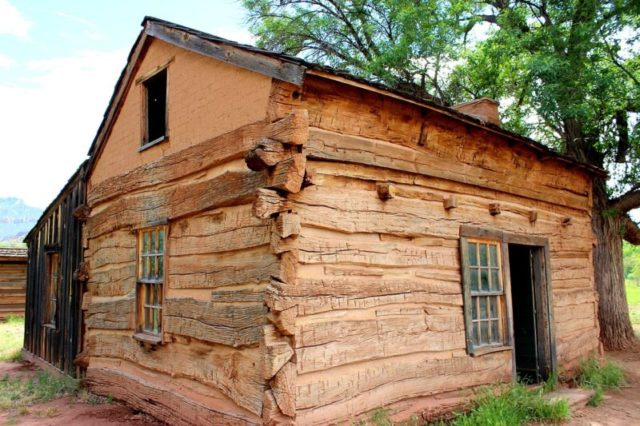It began with Brigham Young, an American politician and settler. He is the founder of Salt Lake City and truth be told he traveled across America to establish new settlements; he went to Idaho, Nevada, Utah, Arizona, and northern Mexico.
One of these establishments is Grafton. Settled for the first time in the winter of 1859. The main driving force behind the forming of Grafton was the growing cotton industry of Utah.
Following the initiative of Brigham Young, a group of people from the town of Virgin, inhabited in 1858, traveled to Grafton and settled there, led by Nathan Tenney.

They named the place Wheeler. The new denizens lived there until January 8th, 1862. On this day the Virgin River flooded the region in what eventually became known as the Great Flood of 1862. The little town of Wheeler never stood a chance against the hefty river and was completely destroyed.
With no other choice, the residents of Wheeler moved almost 2 km upriver. And this is where they formed their new settlement that this time they named New Grafton in honor of Grafton, Massachusetts. Day by day the town grew, and almost two years later there were 28 families or almost 170 people that called New Grafton home.

The town, just as any other of the day, had a number of log houses as well as a post office and a church and a structure that served as both community hall and school.
Almost every family in town had about 4,000 square meters of land that they farmed, land that stood close to the Virgin River. Here they planted cotton and orchards.

But being so close to the river had its positive and negative sides. Grafton’s denizens built small dams and water channels to help them with the farming, but the Virgin River often refused to stay in its riverbed and destroyed their crops and dams and ditches.

According to legendsofamerica.com “And, though they were able to grow cotton, most of their small parcels of land were given over to simple food production to sustain themselves”. But not all was hard work and sweat. Grafton’s residents were always in the mood for picnic and holiday gathering as well as horse-riding and swimming. Sunday was always reserved for religious activities.

But the Virgin River wasn’t the only antagonist they had to watch out for. They had conflicts with local Native American societies, especially during the Black Hawk War.
In 1866, Grafton’s denizens had to be evacuated to Rockville. For two years they were afraid of coming back. And once they did, the Virgin River once more betrayed them. Many of had enough and just left.

Those that remained built themselves a new 2-story building that they used as a church, community center, and school. Around the start of the 20th century, the nearby towns of Shunesburg and Duncan’s Retreat were already empty and vacant, but somehow, Grafton refused to give up. The only difference was that the residents were now concentrating on ranching instead of farming.
But the river just kept flooding Grafton. 20 years into the 20th century and now Grafton had hardly three families left.
Frank Russell was the last man to leave Grafton and he and his wife left in 1944. Even though electricity and plumbing were by now a common thing, they were never part of Grafton.

Nowadays, some of Grafton’s structures are still standing in perfect shape, making them “one of the most photographed ghost town buildings in the American West” according to legendsofamerica.com. The reason why it still stands is that it was preserved by the Grafton Heritage Partnership for future generations to be able to witness life in the old west. Grafton was also the filming location of Butch Cassidy and the Sundance Kid.
